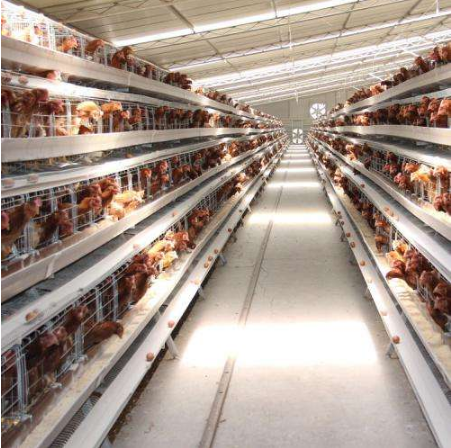Laying hens is a traditional aquaculture project that is now becoming more common and has a high aquaculture value. However, we also need to pay attention to the choice of breeding methods. It is an important method to raise chickens in layer chicken cages. Let’s take a look at the cage culture techniques.
First, the advantages of using layer cages
1. Multi-layer cage raising raises the stocking density than the ground level, and the utilization rate of the chicken house is high;
2. Facilitate mechanized management, expand the breeding scale, increase production, save labor and reduce labor intensity;
3. Reduce the activity of laying hens, reduce maintenance needs, and save feed;
4. cage chickens do not touch the feces, reducing the spread of parasites, E. coli, Salmonella, etc.;
5. The house is clean and easy to manage;
6. Compared with flat farming, it is easy to observe the chicken flock;
7. Chicken manure is clean and improves the utilization of chicken manure.
Second, the layer chicken cage technology
1. Poultry cage for sale
The full-step three-layer egg cage is suitable for farmers, and can hold 3-4 chickens per cage. This three-layer cage, chicken manure can be directly landed, no need to install the septic plate and the septic device, it is suitable for large-scale chicken use. The chicken cage market is available for sale and can be installed and used after purchase.
2. Timely basketing
Breeding chickens should be transferred from the 17-18 weeks of age into the laying cages, so that they have enough time to familiarize themselves with the new environment before the start of production and recover from the migration stress as soon as possible. Before brooding chickens, the sick, weak and sputum, rectal prolapse, and squatting chickens should be picked out for single cage feeding or elimination.
3. Feeding
Cage laying hens are generally fed a full-price compound feed or concentrate purchased from the market and supplied as a dry powder. Sufficient vitamins and trace elements must be added to the feed. At 1-2 weeks before the start of production, the broiler chicken diet should be changed to the laying hen diet. The diet supply method is free-feeding and is maintained until the egg production peak. In order to reduce the waste of feed, do not add more than 1/3 of the depth of the feeding tank. In addition, cage laying hens should be regularly fed with gravel, and every 100 chickens should be fed with 250-350 grams of gravel per week. The gravel must be insoluble sand, and the granite gravel is good, and the size can be eaten. Each grit feed should be fed within 1 day. If granular shells have been added to the diet, the gravel can be fed or fed less. Do not feed the gravel in an unlimited amount, otherwise it will cause hard sputum. Cage laying hens should supply sufficient clean drinking water.
